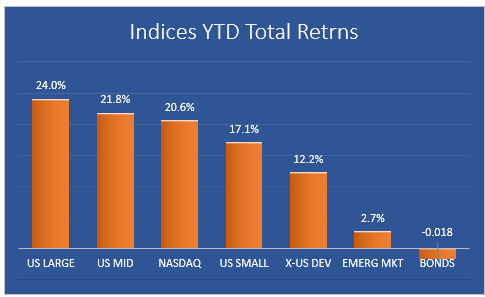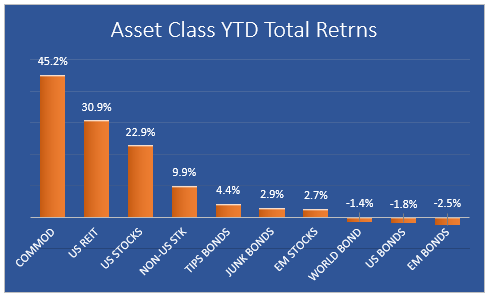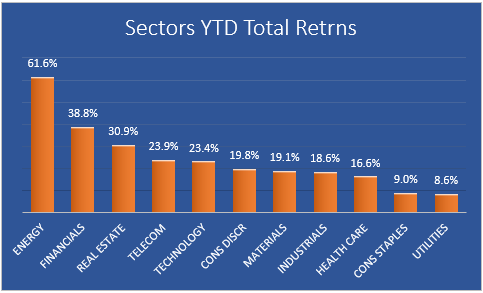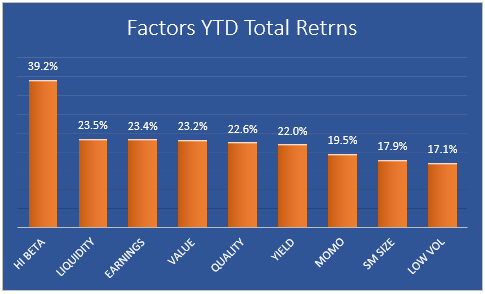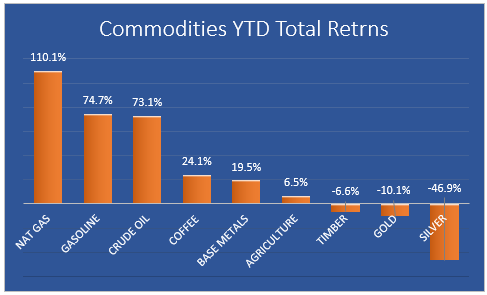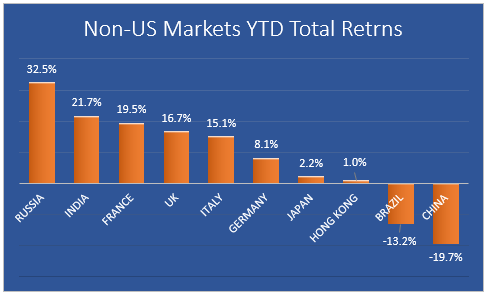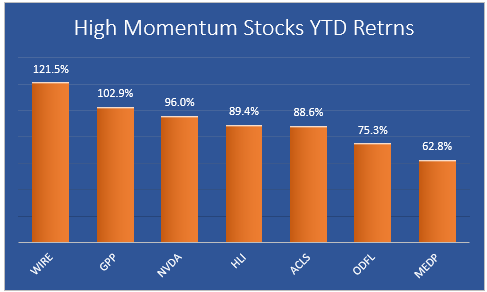Market X-ray - find out what's working and what's not.
Global Stock Market Indices
US large cap stocks are in the lead, up 24.0% after its 2020 gain of 18.2%. Not surprisingly, bonds are the laggard with a YTD loss of 0.018%.
The major US equity indices moved in concert, but the big disappointment so far this year has been small caps, up just 17.1% YTD after being up 21.8% last year. Tech appears to be making a comeback recently, but it will be hard to get traction in a rising rate environment.
Emerging Markets have disappointed this year, after good results in 2019 and 2020. Will they regain their momentum in 2022? I think they will, as long as China doesn't blow itself up.
All of the return data in this article is from Morningstar.
Global Asset Classes
Commodities are romping this year. after losing -7.8% last year. US REITs have rebounded strongly from last year's -4.7% decline.
As expected, bonds - foreign and domestic - are struggling to stay above water. And things probably won't improve next year, as central banks stop buying bonds and rates begin to rise in earnest. When adjusted for inflation, real yields are negative almost everywhere you look, and inflation could get worse.
Stock Market Sectors
Energy is clearly where the action is this year. The rebound from last year's decline of -33% is breathtaking. The same can be said for financials, up 38.8% after losing 2% last year.
Consumer Discretionary stocks led the pack last year, up 48.4%. This year they're struggling to keep up with the S&P 500 index. Consumer Staples and Utilities are lagging as investors continue to rotate into "reopening" sectors.
Stock Market Factors
High-Beta stocks are the place to be this year, up 39.2%. And they were up 25.6% last year, second only to Momentum stocks, which were up 29.2% in 2020. But money is flowing out of Momentum stocks this year, and much of it is going into Value names. (See the highlighted momentum names later in this article.)
Commodities
After spending years at the bottom of the tables, Natural Gas, Gasoline, and Crude Oil now lead the pack. Gold and Silver are last place YTD after big gains last year. Barron's has an article that discusses an ongoing rotation out of gold & silver and into crypto. We'll see if that continues to pass as the year progresses.
Coffee anyone? Investors are loving it this year.
Foreign Markets
Russia leads the pack, after a flat 2020 performance. They are selling more oil, at higher prices this year. But Covid restrictions could dim their prospects.
Of the two countries with a negative YTD return, China is the worst performer. Last year their market was up 28.3%. Tensions between China's leadership and the Chinese business community are increasing, and their massive property sector is in serious trouble. If I had to pick a favorite for next year, it would be Japan.
Momentum stocks
These stocks are showing strong momentum for 1 month, 3 months, and year-to-date periods. This is a small sample of where the money is going now.
It's not too late to buy WIRE, even after a 121.5% run YTD. It has a single-digit P/E and it gets high scores on StockRover for Quality, Growth, and Sentiment.
Final thoughts
Global markets will continue to rise until the FED and other central banks pull the trigger on rates. We got a preview from Canada last week, and there will be more to come in 2022,
I believe that gains in the remaining two months of this year will be harder to come by. There are others who believe that we will see a final blowoff top that takes the S&P 500 to 4900 by the end of December.
Keep a close eye on what the FED does. They control the money flow, along with our recalcitrant Congress who can't seem to agree on much of anything. The passage of a watered-down infrastructure bill, if it happens, might help keep the good times rolling for a while.
To spot trouble, watch for a series of lower lows in the markets, followed by failed attempts to make new highs. The fearless dip-buyers have been aggressively supporting this market ever since the pandemic low point last year. If they become fully invested, their significant flow of new money into the market could stop.

